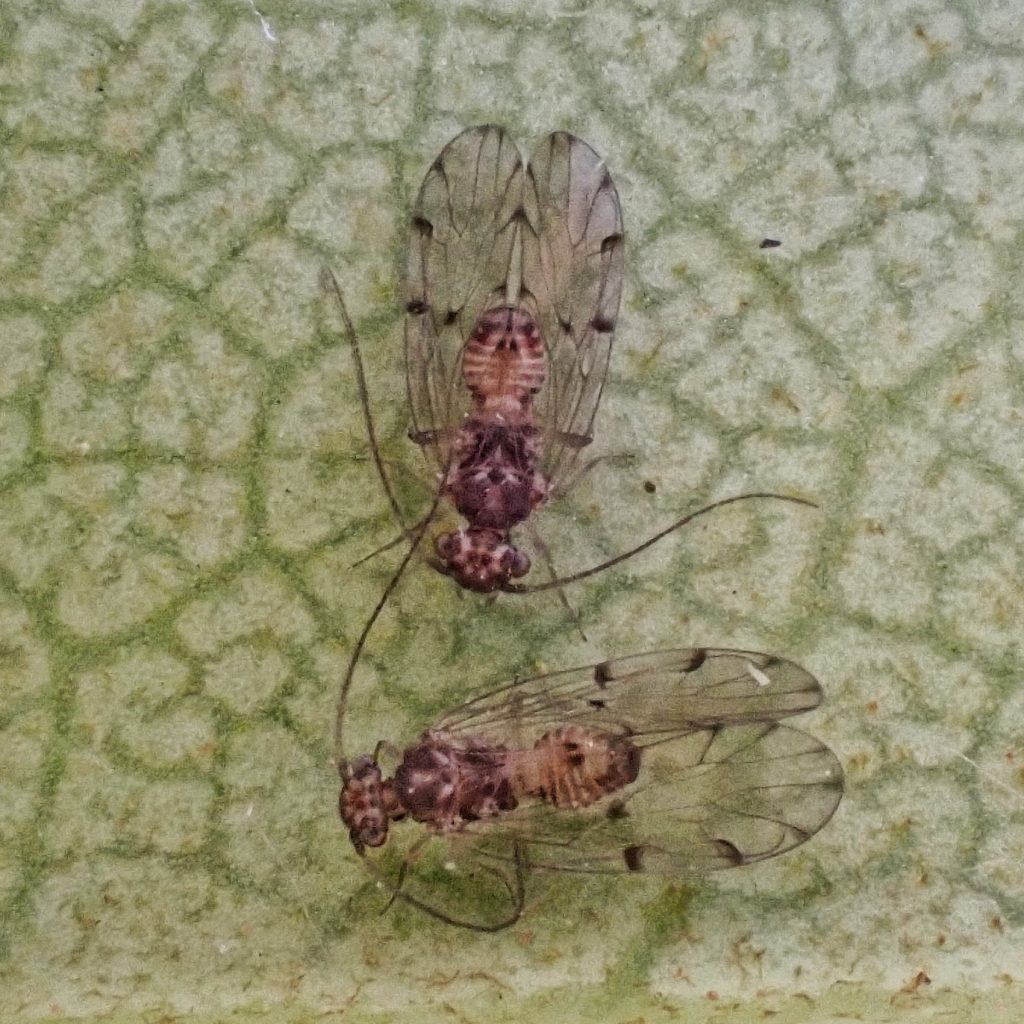
These are barklice, and it is a new order (Psocodea- barklice, booklice, and parasitic lice) for these profiles. And no, these aren’t anything where you’ll have to keep your kid home if you find them on their head. Barklice are harmless grazers of algae, mold, lichens, and decaying organic material, and the members of this genus are only found on trees. I’m embarrassed to admit that I thought they were tiny flies when I first found them on the leaves of trees whilst Pam was watering for her vacationing friend. In my defense they are tiny (about 2mm) and through the viewfinder they were still rather indistinct. In fact I was only photographing them because there appeared to be a pattern on the wings, which made me think I might be able to identify them.
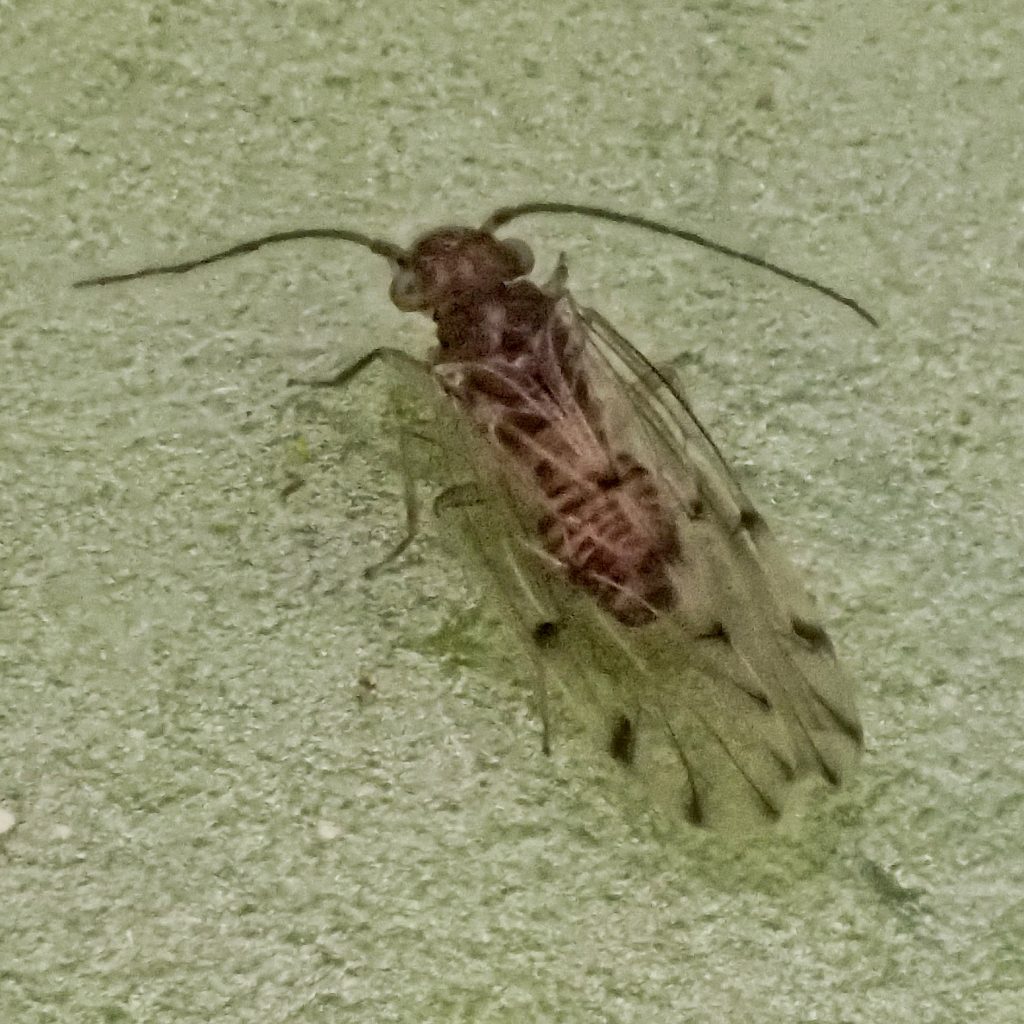
I managed to collect one, but even after refrigeration I had a difficult time getting a decent photo, and it almost escaped, so I euthanized it and put it under the stereoscope, where I discovered that it had four wings. I spent an hour or so going through books and photos, all to no avail, before finally plugging it into my Seek app, which shocked my by telling me it was Ectopsocus, when I had expected no answer at all. And, after combing through hundreds of photos of barklice, Ectopsocus looked like a valid possibility, so I submitted the best of my poor photos to BugGuide, where the experts confirmed the genus, and said it was likely E. californicus, based on the relative solidity of the spots on the wing margins, although absolute certainty was not possible from photographs.
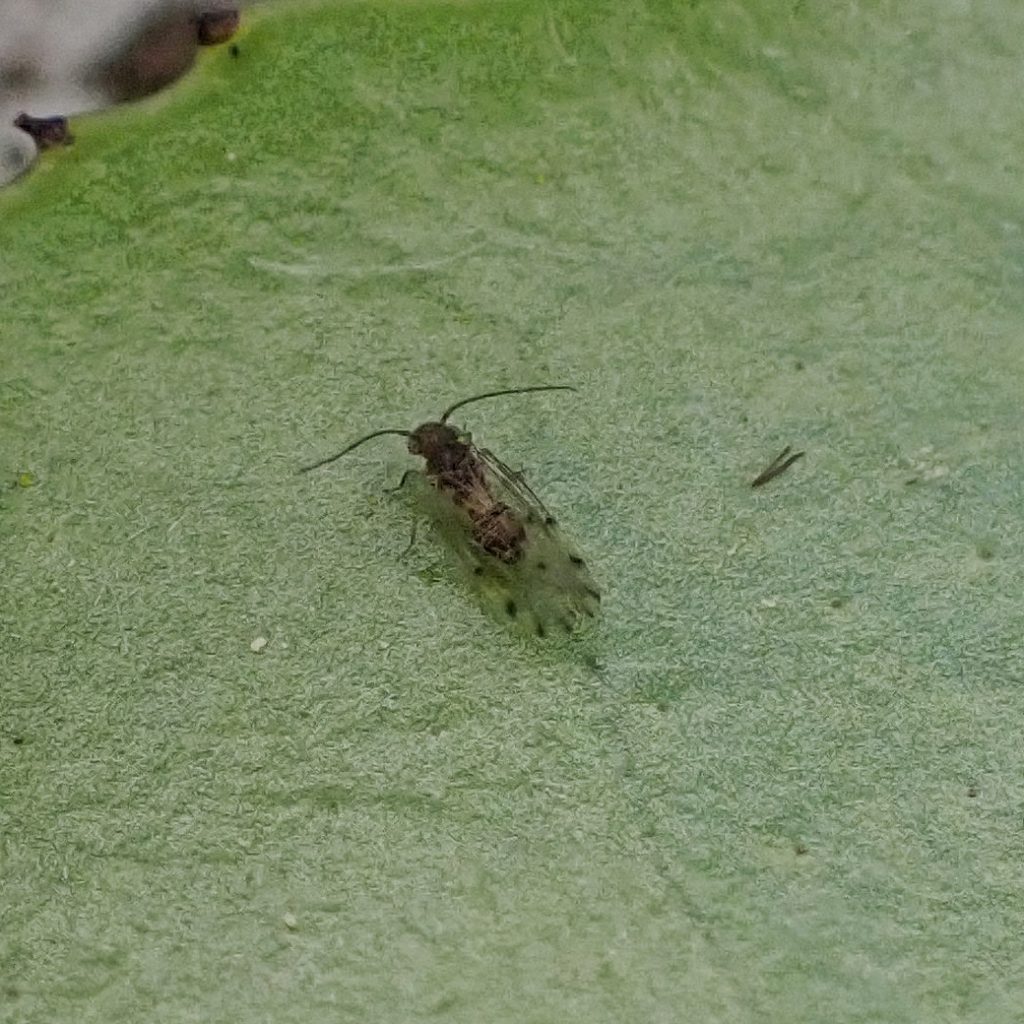
There appear to be only 3 species of Ectopsocus in our region: E. californicus, E. briggsi, and E. meridionalis, but I may be missing something, and distribution is not fully understood. It’s even possible that there are undiscovered species in our region. It is hard to find species specific information on members of this genus, so I’ll be relying on information on members of the family Ectopsocidae in general. Bark lice in general are not considered to be a pest species, and the dietary habits of ectopsocids do very little harm to the trees they inhabit. Due to their presence in the feathers of birds it has been speculated that many species of ectopsocids disperse by phoresy, hitchhiking rides on migrant birds.
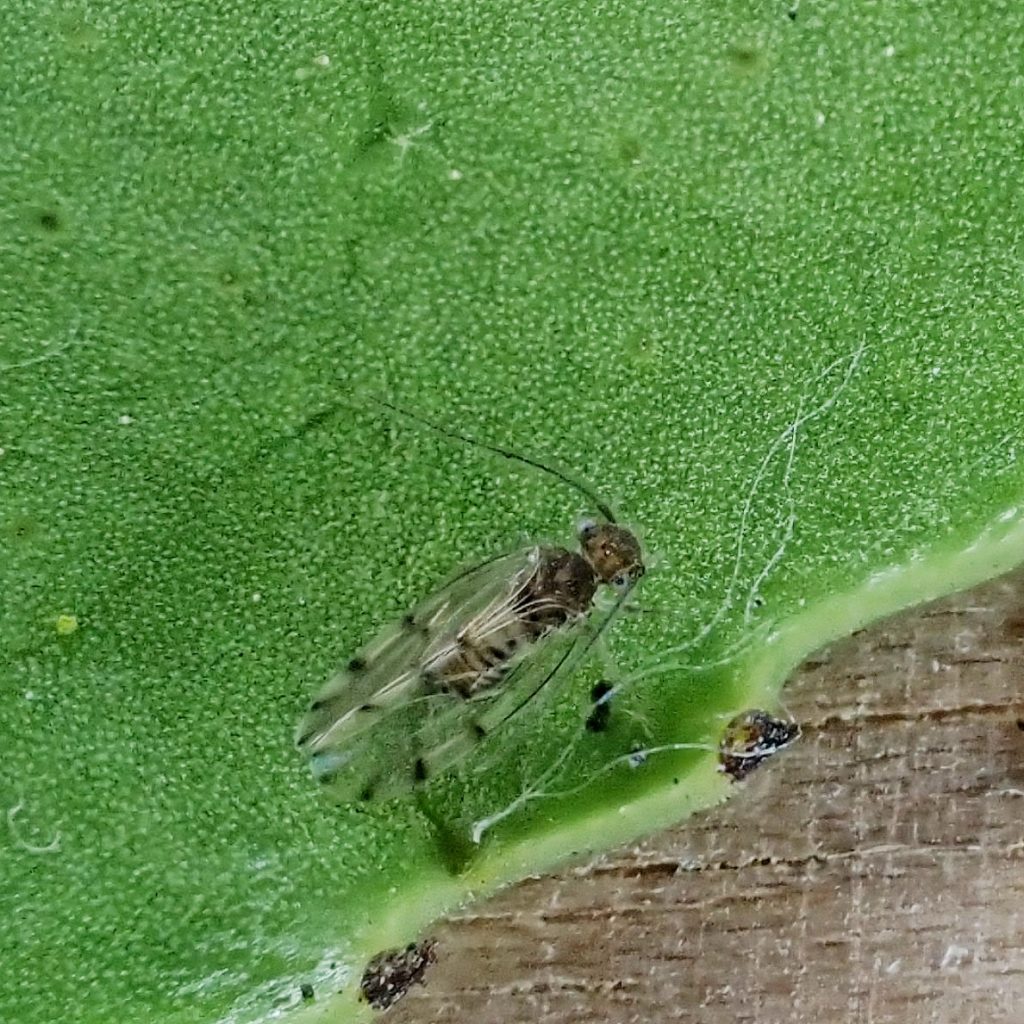
Description-Tiny (2mm long) insects with a bulbous head that is wider than the pronotum and both fore- and hindwings with distinct dashes along the margins; pronotum is dark and solid in color, and the abdomen is reddish with thin, lighter colored bands; antenna have 11 segments.
Similar species–E. briggsi has less distinct marks on the wing margins; E. meridionalis has even fainter ones; other suborders of Psocoptera have more than 11 antennal segments; microscopic analysis of genitalia is often required to even ascertain a family in this order.
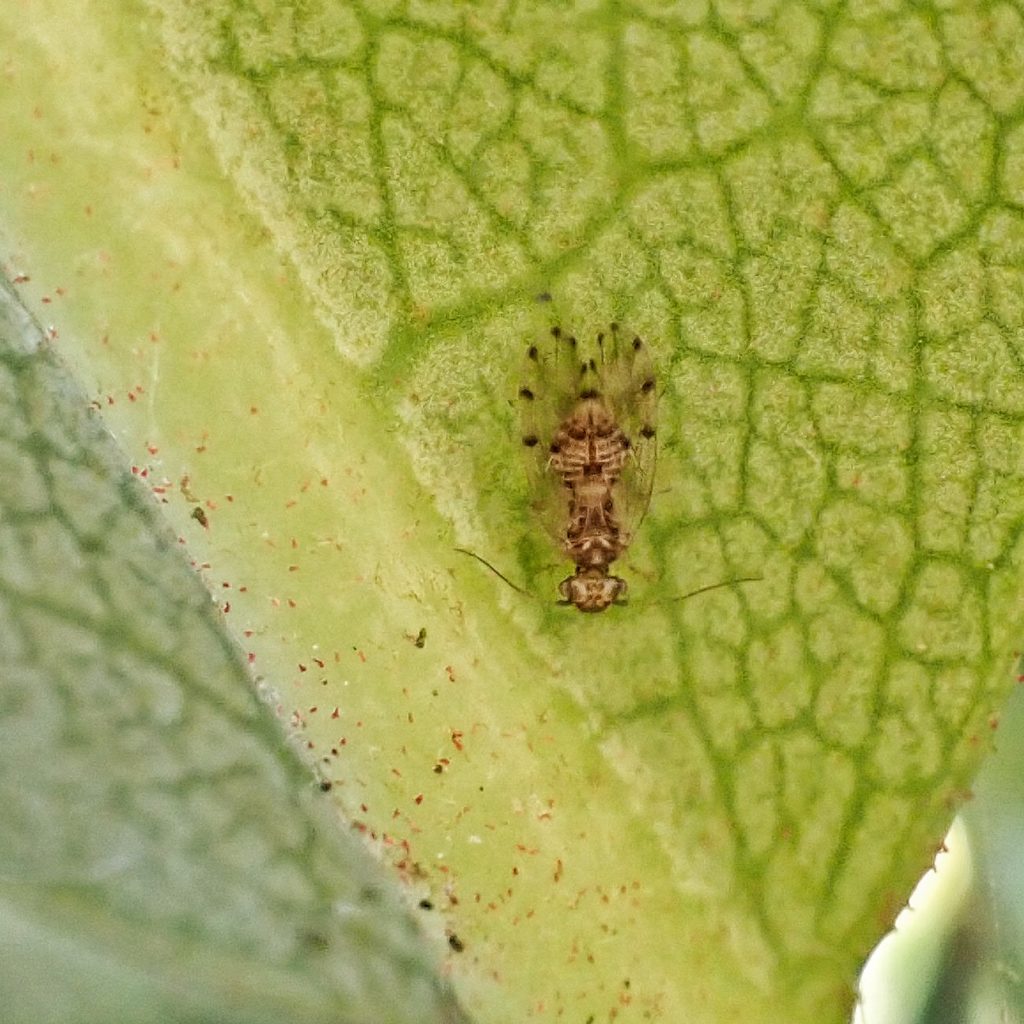
Habitat-Living and dead foliage of a very wide variety of trees, including both deciduous trees and conifers
Range– All are widespread; all seem to be found primarily west of the Cascades in our region.
Eats-Lichens, algae, fungal hyphae, and molds.
Eaten by-Eggs are parasitized by mymarid wasps; nymphs are parasitized by sphecid and brachonid wasps; predators include spiders, harvestmen, beetle larva, predatory Hemiptera, and birds.
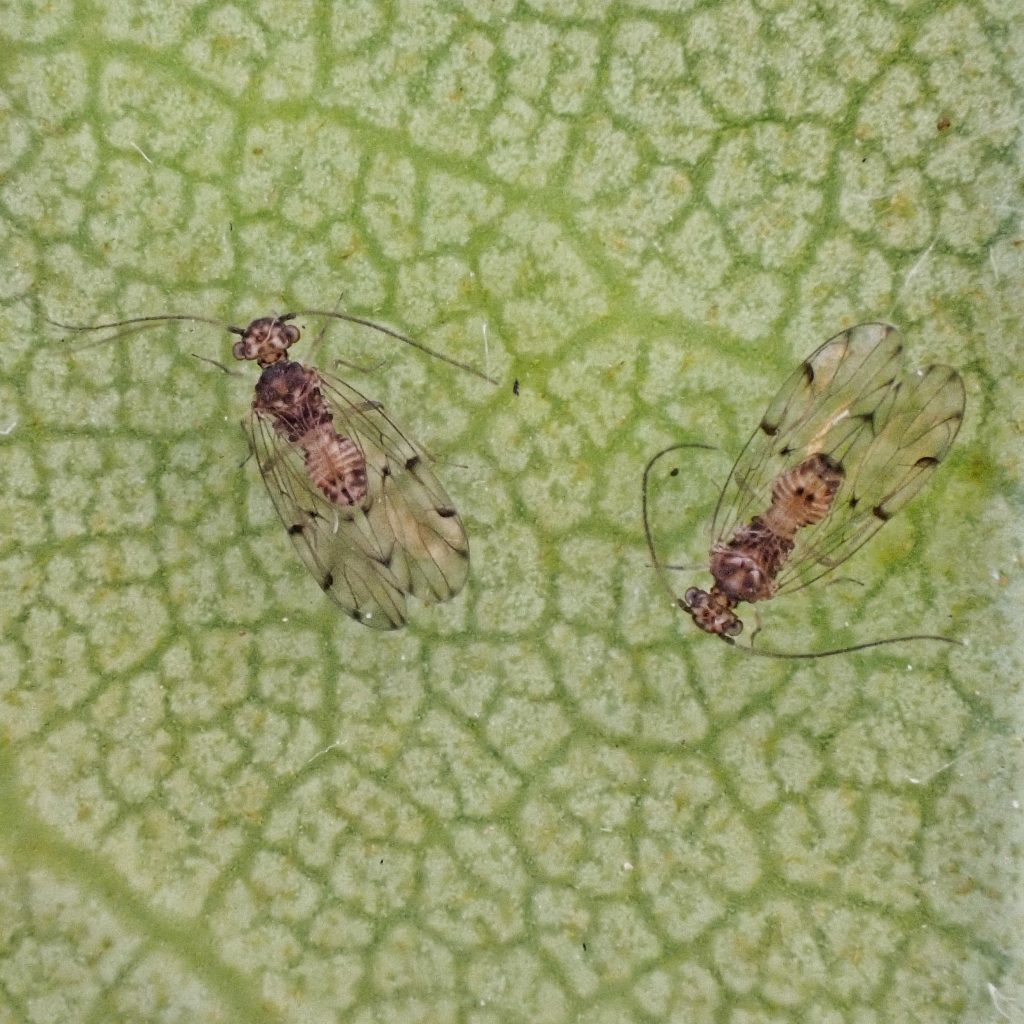
Adults active-apparently year around, based on information at BugGuide.
Life cycle-Eggs are laid in webbed groups on leaf surfaces
Etymology of names–Ectopsocus seems to be from the Greek word for ‘outside of’ combined with the generic name for another related group of lice ‘Psocus’, meaning that they are separate from that group. Psocus is from the Greek word for ‘rub away/grind small’, which I’m guessing refers to their method of grazing surfaces or to the very small size of most booklice. The specific epithet californicusprobably refers to the location of the type specimen.
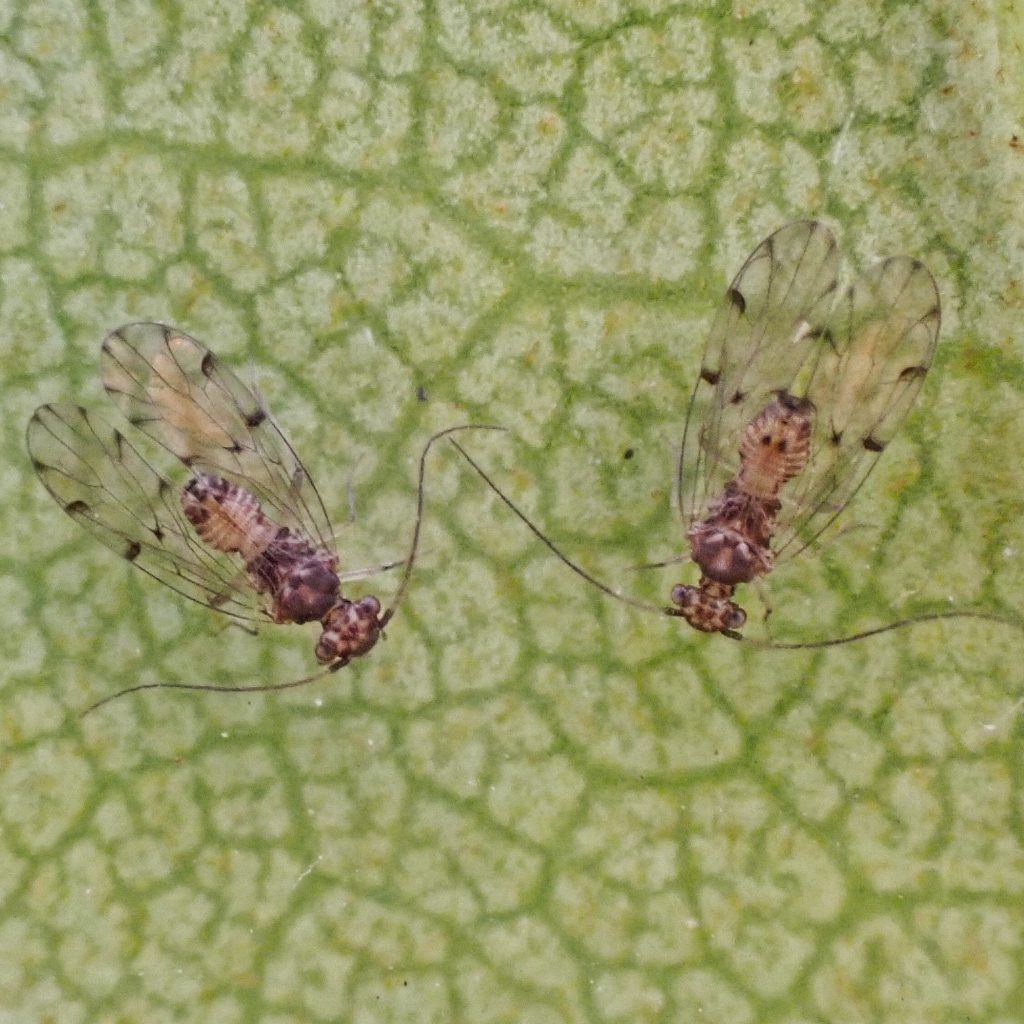
https://bugguide.net/node/view/141063
https://bugguide.net/node/view/262594
https://bugguide.net/node/view/141064
https://mistletoediary.com/2012/04/06/briggs-outer-barklouse-found-on-mistletoe/amp/
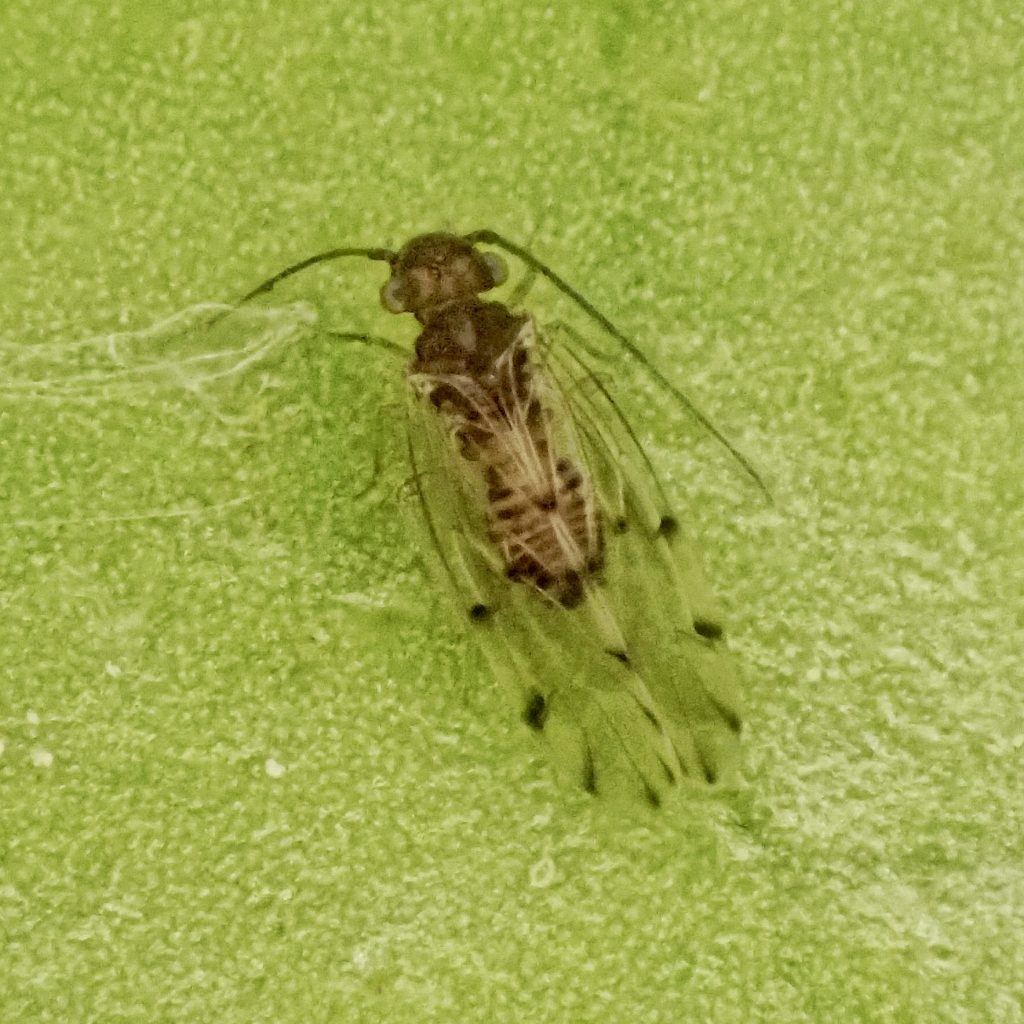
“Eggs are parasitized by mymarid wasps.”
Reminds me of,
“Big fleas have little fleas upon their backs to bite them, and little fleas have lesser fleas, and so ad infinitum.”
Nature never fails to amaze me.
Yes!!! And it’s the intricacy and interconnectedness that so many people miss. They seem to think you can subtract this or add that and that it will just keep on ticking away, and while that may work for awhile, eventually there will be a cascade effect.
Cute little things. Now I want to go out and find them in my yard.
You’ll have to look closely. Good luck!